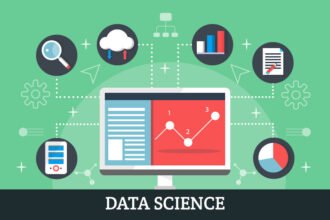For organizations looking to make the most out of their relationships and processes, the discovery of meaningful information via analysis can often prove valuable and lead to substantial insight. Data that reveals facts about customers, for example—such as identifying customers who cancel accounts and leave for the competition, those in a specific cross-demographic, or even those in a specific income range who have contacted the call center three or more times in the last six months—is data that can be acted upon.
These insights allow for a deeper understanding of not just customer behavior, but also logistical bottlenecks, project effectiveness and more. But to get the most value from these insights, it’s necessary to extend findings into business activities via predictive analytics. This means utilizing insights to identify where slowdowns in processes are, and take steps to alleviate it on future loops or predict a customer’s future behavior.
To achieve positive results with predictive analytics initiatives and ensure the results are integrated with business processes, there are numerous aspects to prioritize—and pitfalls to avoid. Indeed, there are countless ways predictive analytics can enhance processes, but before they are put into use organizations must consider the following “Do’s” and “Don’ts”:
- DO: Make proactive rather than reactive decisions – Results provide insight on likely behaviors. Armed with this information, organizations can encourage positive activities and reduce negative ones.
- DON’T: Fail to focus on a specific business initiative – Focusing on a specific business initiative reduces the chance of “analysis paralysis,” where effort is wasted on trying to fit the analysis findings to an undefined objective.
- DO: Focus on projects that will impact the bottom line: either generate profits or reduce costs – These types of projects are more tangible and this easier to gain approval for, which enables an organization to capitalize on gathered data.
- DON’T: Ignore crucial steps, such as data preparation and access – When deploying predictive analytics, many companies overlook important steps in the process. One of the most frequently ignored is data preparation and access. In reality, this should be the activity to which the most effort is devoted. In fact, data preparation typically accounts for approximately 60 to 80 percent of the cost of a predictive modeling initiative.
- DO: Take a broad view of the process and develop a holistic approach to the solution – If you focus only on one aspect—i.e. gathering a certain set of data points—it’s possible you won’t be as prepared as needed for the process of leveraging it, and time is often of the essence as data is constantly changing. Ensure ahead of time that options are available for acting on predictive analytics when you’ve gathered the insight.
- DON’T: Spend too much time evaluating models – Companies often tend to over-evaluate. They add new variables to the models to increase their accuracy, which often requires rebuilding, delays deployment, and prevents the organization from realizing the substantial advantages that predictive analytics can offer.
- DO: Perform a thorough collection and exploration of the data – Identifying data quality issues, gleaning initial insight, and detecting relevant subsets not only enables those working with the data to become more familiar with it but helps assure that any analyses performed will be done more efficiently and with greater accuracy.
- DON’T: Invest in tools that yield little or no returns – When it comes to the computing environment, organizations typically look to implement two systems: one for predictive analytics, and a reporting system to deliver results. This creates additional and unnecessary hardware, support, and maintenance costs. A simpler and more cost-effective approach is to combine these into a single environment.
- DO: Prepare the data – Be careful to select the relevant data when choosing tables, records, and attributes from various sources across the business. Data must then be transformed, merged, aggregated, derived, sampled, and weighed. It is then cleaned and enhanced to optimize results.
- DON’T: Fail to operationalize findings – If an application is not built and deployed, or a tangible change to a process made as a result of predictive analytics findings, the effort devoted to preparing and creating a model, not to mention collecting and analyzing data, will have done nothing to enhance forward-looking decision-making. The results will remain in a document that few people will refer to in support of their daily activities.
- DO: Select and apply various modeling techniques – In addition to having properly prepared data, you must be sure to use the analysis techniques that are best suited for your purpose. Some techniques may explain the underlying patterns in data from a more useful angle than others, and therefore the outcomes of various modeling methods must be compared.
Avoiding these common planning errors and adopting the best practices outlined above can be the difference between successfully implemented predictive analytics and wasted potential. These do’s and don’ts are a roadmap to help organizations take complete advantage of their data, accelerate implementations, and glean insights that can be acted upon.









